Fishing Report: The Florida blue crab is a summertime treat for some, bait for others
Those who call these the “dog days of summer” must’ve never heard about the versatile Florida blue crab, who shows no slowdown as the temps rise and grow stubborn.
Throughout the intracoastal, you’ll see the small buoys, signaling a crab trap down below — sometimes here and there, often in clusters.
But it’s not just the commercial and serious crabbers with their semi-permanent traps. At practically any local fishing dock or pier — and often along banks — you’ll find folks either dropping traps of all sorts, or tossing them 20 or so feet out into the river. Or casting them!
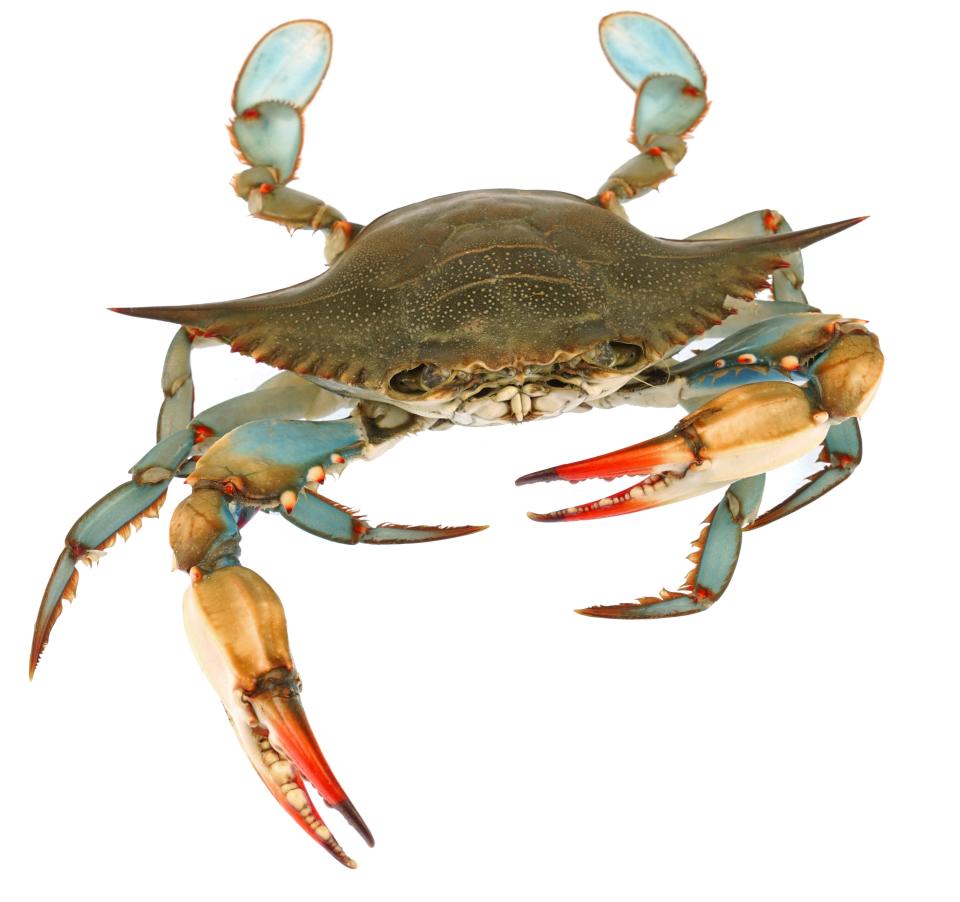
Maybe I don’t get out enough, but it was just last week that I came upon a woman casting a crab trap into the river with rod-and-reel. Yep, casting. Quite appropriately, they’re known as “castable” crab traps, which sit flat on the river bottom, with bait (chicken legs are most popular) attached to the middle, then fold tightly when retrieved.
“I just watch my line, and when it starts to move a certain way, I know there’s a crab in there,” I was told. Sure enough, she was right, and was right, often enough, to show off an iced cooler full of blue crabs.
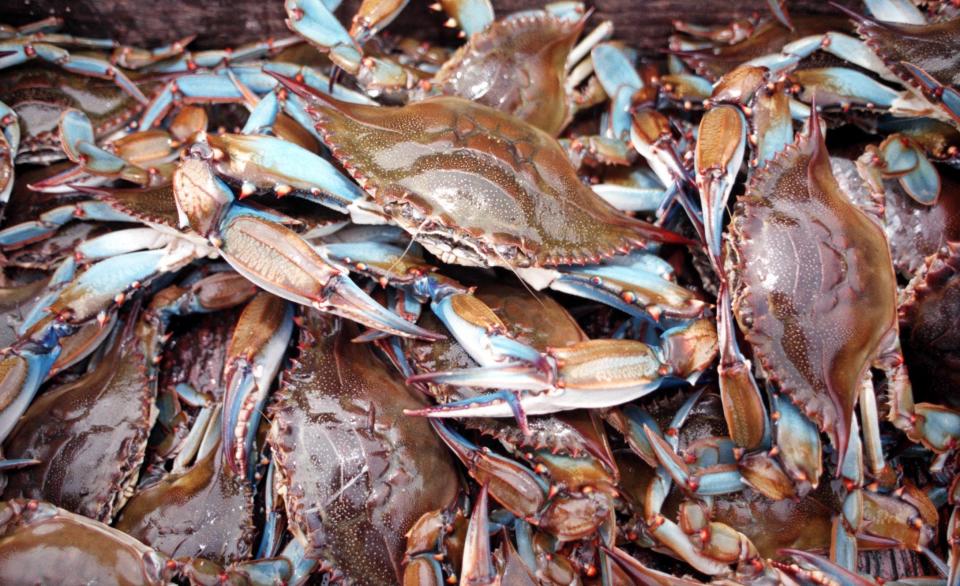
You need solid gear and strong line for this method. On the far extreme, you can actually go crabbing with nothing but a piece of bait tied to the end of a string — you feel the tug and every-so-slowly try bringing your “catch” to the net.
However you do it, yes, you need a Florida fishing license.
The daily limit is 10 gallons per person, and now you might be wondering, “What on Earth would you do with so many blue crabs?” It’s basically the same two reasons you’d keep anything else from the river: You either eat them or use them for bait to catch something even bigger and better.

Some serious anglers, particularly targeting black drum and bull redfish, will use chunks of blue crab for bait. They either catch their own or buy frozen from the bait shop.
Others eat them. There’s a process, and some research or personal schooling is highly recommended. On the bright side, there's no blood. And once the hard work is done, you’ve got yourself a real morsel.
Two tips, however. Don’t prep a crab that’s already dead. Upon death, they release toxins that mess up the meat’s taste and aren’t exactly good for your own innards.

Second, toss back all egg-bearing females. It’s easy to spot. The female’s underbelly has a rather pretty dome-shaped “apron,” usually colorful. If it’s covered with a rust-colored sack, those are eggs.
For what it’s worth, the male’s underbelly apron has a very different shape. In polite society, I guess we should describe it as, ahem, steeple-like.
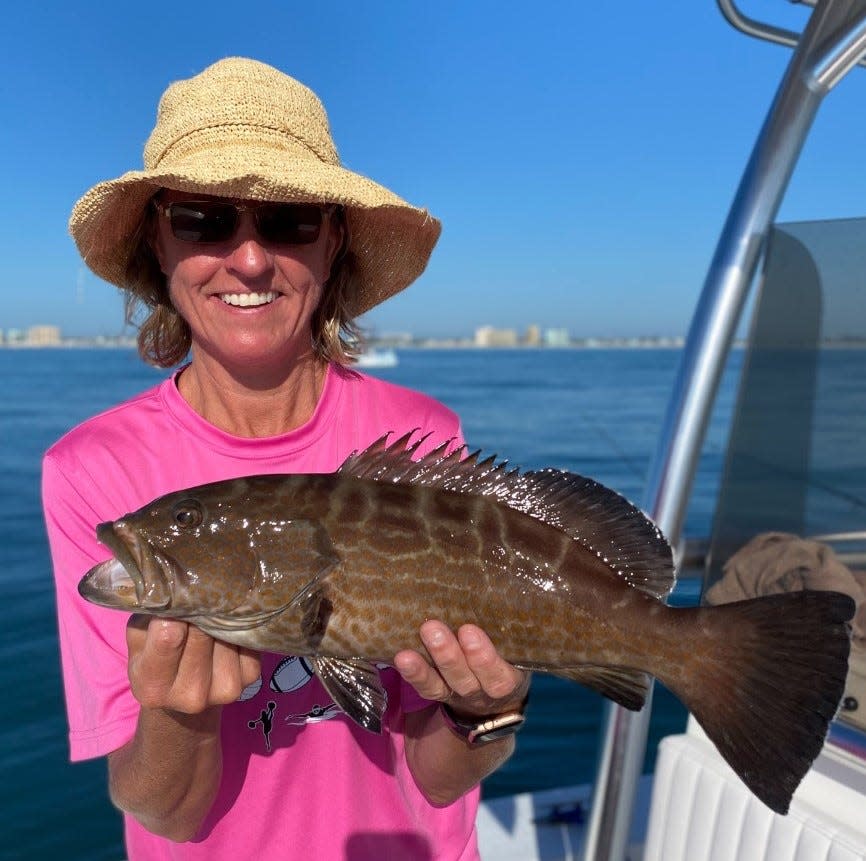
Halifax/Indian River
Before we finally get to the fish, we’re told the shrimp are still fairly thick in the channel, in their time-honored stomping grounds just south of that new Orange Avenue bridge.
For the fish, let’s start toward the southern end, where Capt. Michael Savedow (EdgewaterRiverGuide.com) says the early mornings have been most active.
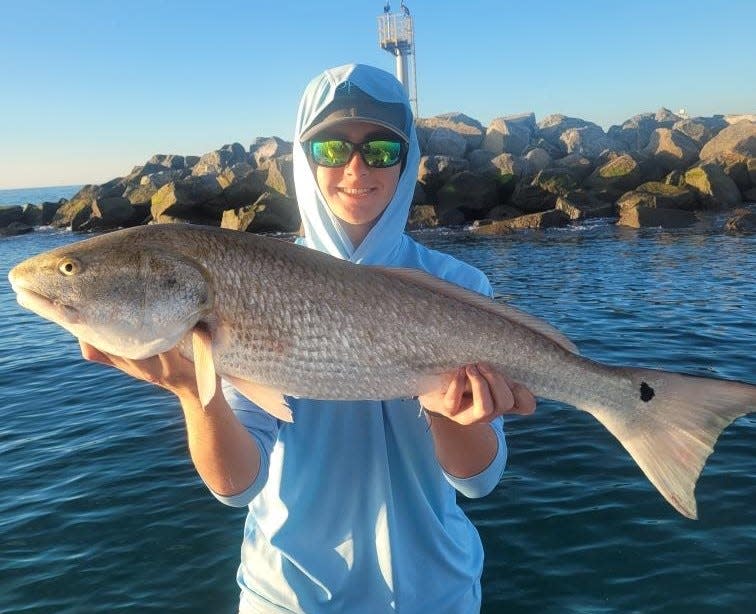
“Jacks, tarpon and ladyfish, with visible feeding on the surface,” says Capt. Michael. “We’ve been casting shrimp and small lures for sight-casting hookups.”
Along with a few trout, black drum, whiting and mangrove snapper, Capt. Michael put one of his recent passengers on a “teen-sized” tarpon.
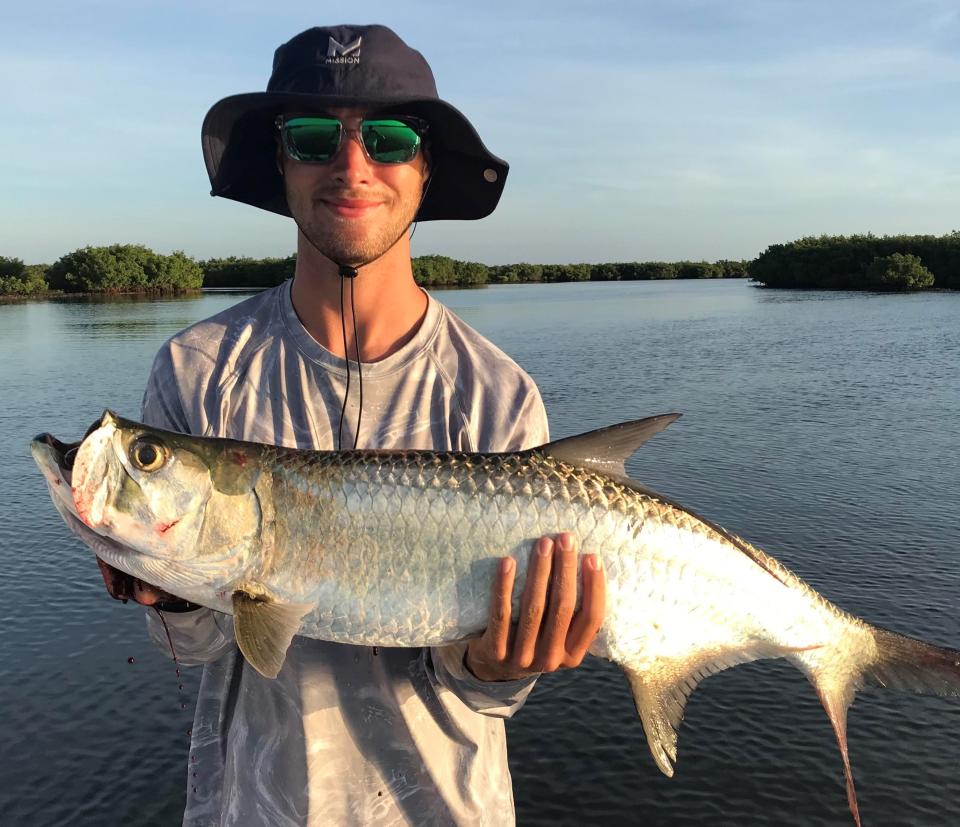
Back up toward Ponce Inlet, and just outside that inlet, Capt. Jeff Patterson has seen the bite slowed some by the annual upwelling of cooler water offshore. But still, “nice snook and redfish have been hanging around the jetties,” he says.
Reminder: Snook remain catch-and-(carefully)-release until Sept. 1.
The tarpon, which had been gathering in big numbers just offshore, have been scarce in recent days due to the cold water, Capt. Jeff suggests. However, he did have a customer reel in a black grouper out on the nearshore, which just doesn’t happen every day this far north in Florida.
Up into the Halifax River, Capt. Jeff is seeing lots of baitfish, and he’s been catching his share of reds and snook on live shrimp and finger mullet under a popping cork.
He also issues a warning for boaters: “The water has been extremely low, so be careful in areas you’re not familiar with.”
Ike Leary, from behind the counter at his Granada Bait & Tackle, is hearing talk of black drum making an appearance.
“Some anglers are finding nice sheepshead, fishing bridge structure,” says Gene Lytwin (The Fishin’ Hole in Daytona Beach). “Others are catching a few mangrove snapper.”
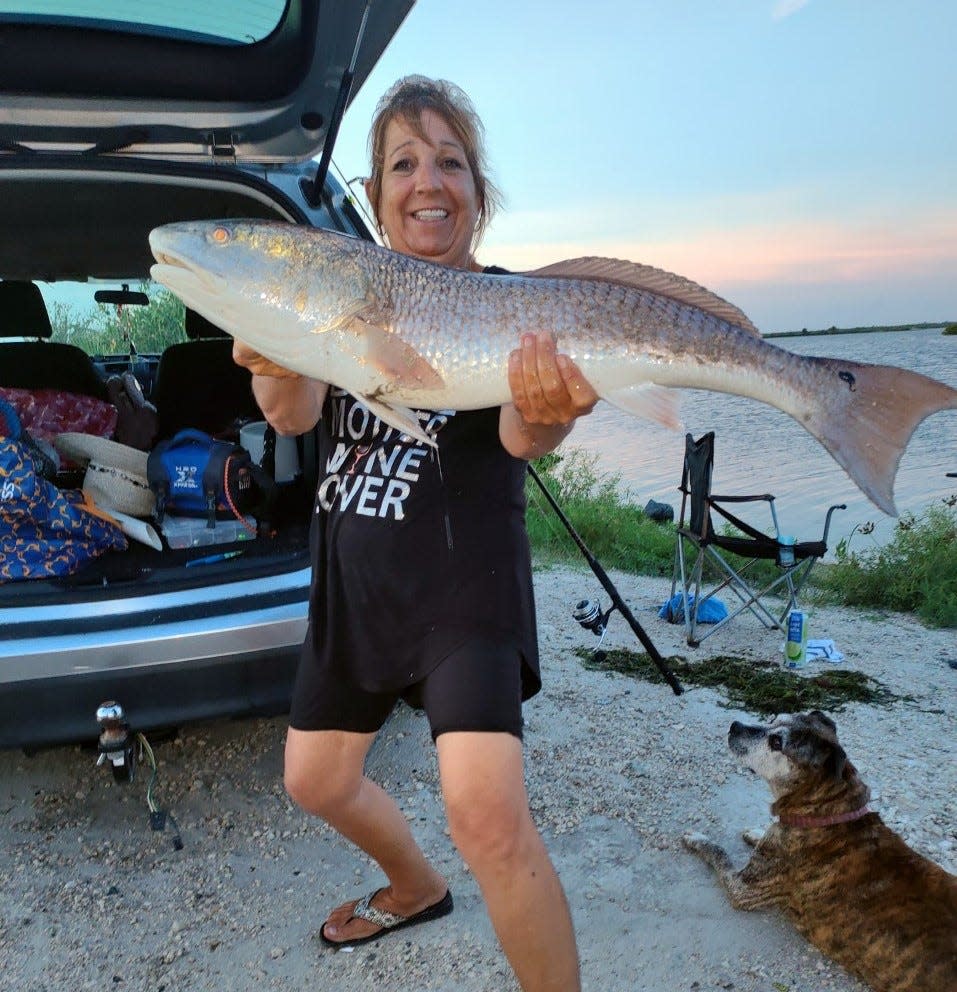
Surf
With the colder ocean temps spooking some fish, many surf fishermen turn to a tried-and-true bait: Peeled shrimp.
Peeled?
“The ‘center cut’ of the shrimp, with the head and tail removed, is curved around the hook,” says Craig Patterson (Donald’s Bait & Tackle, Port Orange).
Again, why?
“Some anglers say it resembles a sandflea,” he says. “Others say it’s easier for the surf fish, like the tasty whiting, to suck up the bait.”
Who doesn’t like to have their shrimp peeled for them?
KNOW YOUR BOUNDARIES: A bridge too far? If fishing for reds, it just might be
GIVE IT A PINCH: Barb or no barb? All things equal, take the pliers to that hook
Offshore
The smart people call it “thermocline,” that upwelling of colder water from the deepest depths that makes an appearance every summer. It temporarily makes bottom-fishing a big challenge. The answer: Fish a different depth, apparently.
“Many of the bottom fish are pushed up the water column, including reports of many fish, including cobia, being caught over and above artificial wrecks ranging from 10 to 20 miles out,” says Craig Patterson.
“Cold-water currents move in along the bottom, shutting the bottom fish down,” says Gene Lytwyn. “A few anglers are trolling for king mackerel, with some success.”
Flagler County
Capt. Mike Vickers (Hammock Beach Bait & Tackle) says the influx of colder water has helped the redfish bite in and around Matanzas Inlet. Some permit and even the funky lookdown have been reported, too.
And they’re also seeing some tripletails sniffing around the crab pots in the river. (Tip: They like to loiter around channel markers, too.)
“This tells us the number of shrimp in the river has increased dramatically,” Capt. Mike says.
Good catches of trout and snook at night in the river, he adds.
“The beaches are still mainly whiting, catfish, sharks and the occasional red, flounder, and drum,” says the cap'n.
St. Johns
The proverbial Dog Days have made a fairly lonely man of Kerry McPherson over at his South Moon Fish Camp in Astor.
“Those who are out fishing are doing pretty well, but there’s just not that many of them right now,” he says. “The heat, you know.”
Yeah, we know.
His handful of summertime regulars are getting stripers early and late, with some specks and bluegill also to be had. Mostly in the main river, between the Astor bridge and Lake George to the north.
Down in DeLand, at Highland Park Fish Camp, outgoing fishermen are still finding some schooling bass if they’re out very early in the main river. “Marker 42,” says Capt. Ronnie Paige. “That area, they’re schooling, early in the morning until no later than 10.”
If you motor up to Lake Dexter, he says, the bite is pretty good late in the day, from about 5 until dark.
Halifax Sport Fishing Club
A couple of upcoming events the HSFC wants to peg on your cork board:
• The HSFC’s second annual Kingfish Tournament is next Saturday (Aug. 13), with the captains meeting two days earlier. There will be several categories and there are plenty of the familiar rules and regulations. Get ’em all at HSFC.com.
• The general meeting for August will be a different type of affair at the club. The folks from Fishbites will be on hand for a fishing event on the pier near the clubhouse (3431 S. Ridgewood Avenue, Port Orange).
Bring your own rod, and only Fishbites will be put on the hooks. Reminder: Fishbites, headquartered in St. Augustine, was invented by a New Smyrna Beach native, Bill Carr.
Doors open at 6:30 and there’ll be a brief meeting at 7, followed by some dock fishing. And it’s free. Again: HSFC.com for all details.
Hook, line and clicker
We want to see your most recent catch. Email your fish photos to ken.willis@news-jrnl.com.
Please include first and last name of angler(s), as well as type of fish (we're occasionally stumped). All are included with our online fishing report, and some occasionally make the print edition.
This article originally appeared on The Daytona Beach News-Journal: Where can I catch blue crabs in Florida and do I need a license?

